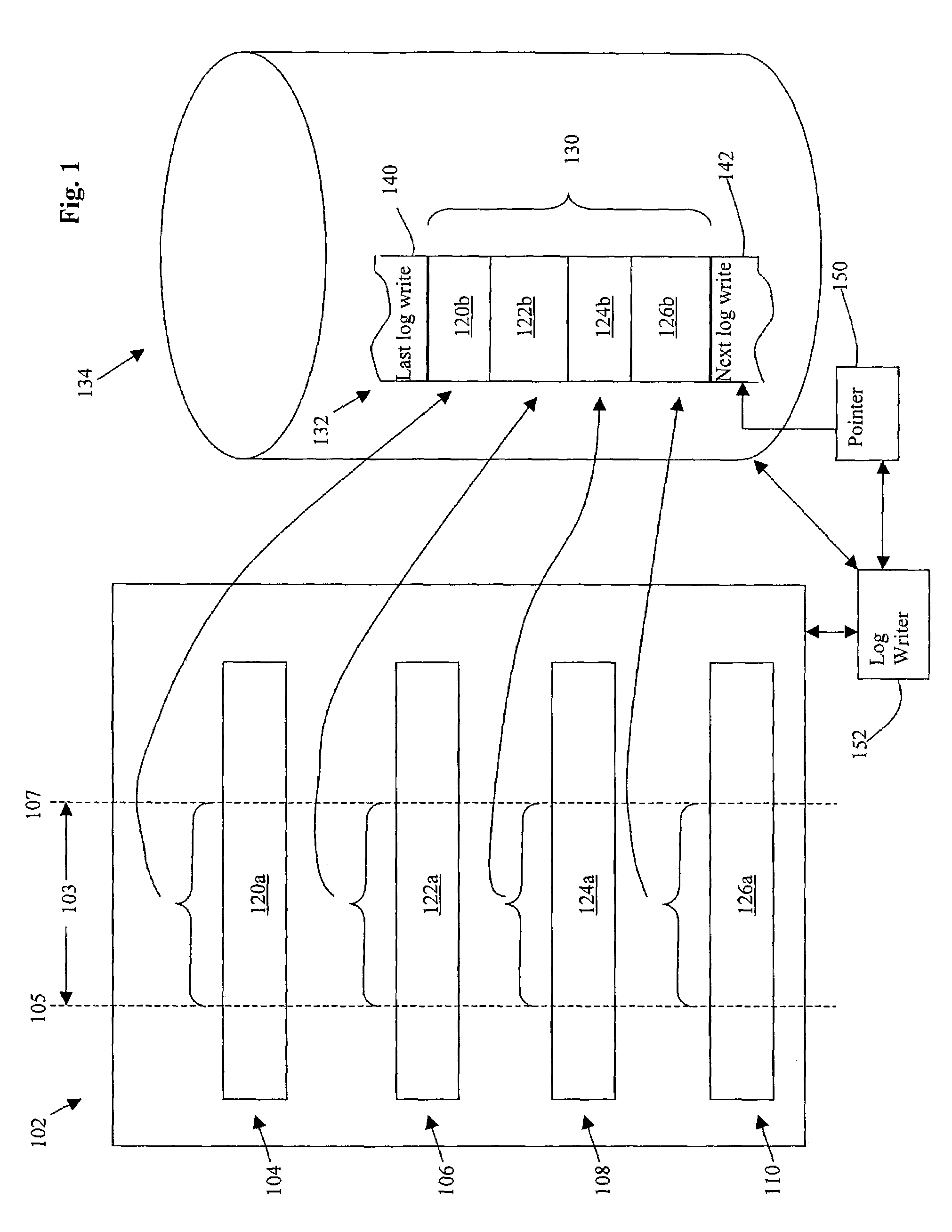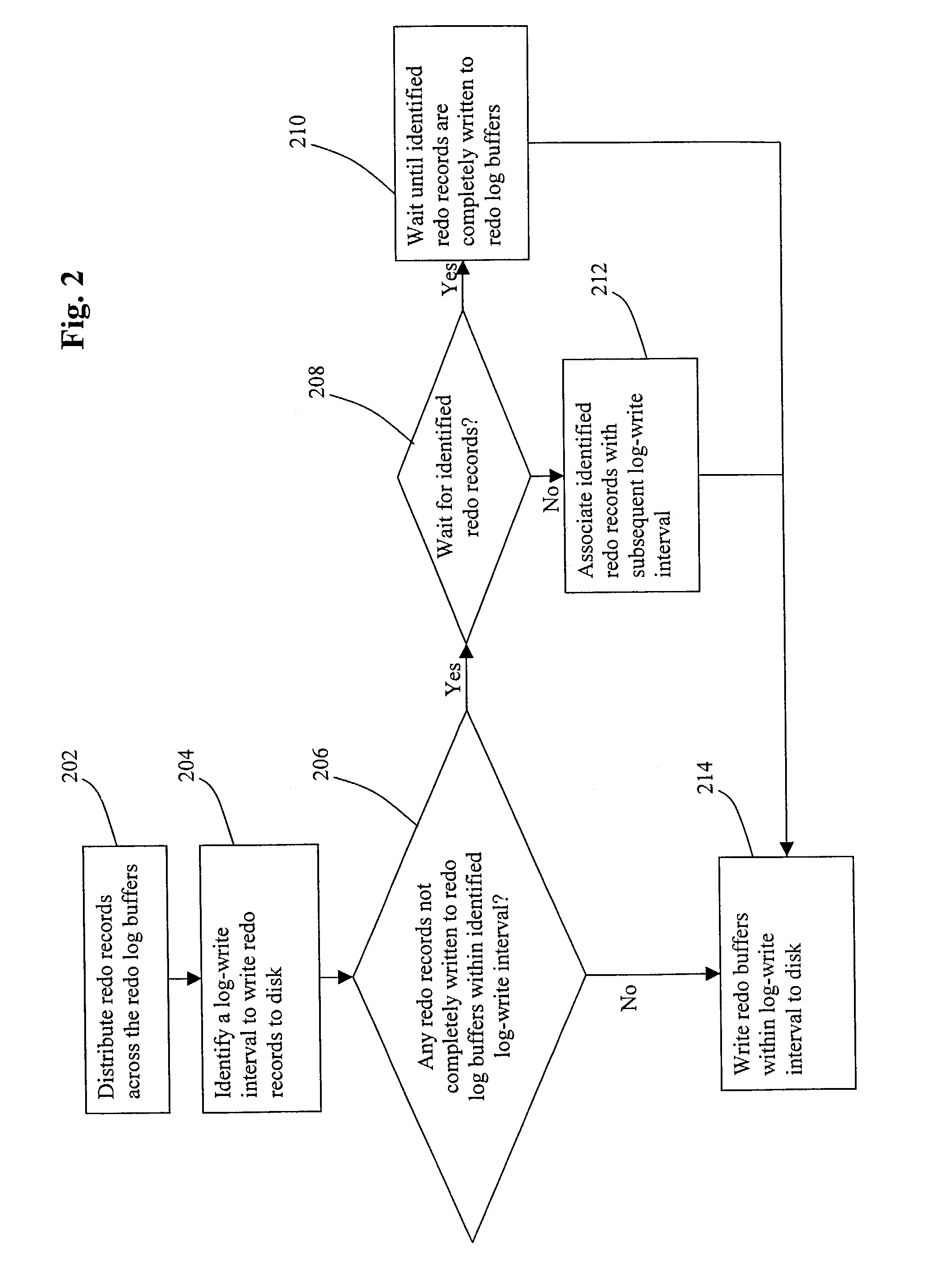Method and mechanism for efficient implementation of ordered records
a technology of ordered records and implementation methods, applied in relational databases, data processing applications, instruments, etc., can solve problems such as hardware failure, network failure, system failure or aborted transaction, etc., to reduce redo generation bottlenecks, and achieve high scalable redo generation processes
- Summary
- Abstract
- Description
- Claims
- Application Information
AI Technical Summary
Benefits of technology
Problems solved by technology
Method used
Image
Examples
Embodiment Construction
[0017]The present invention provides improved methods, mechanisms, and systems for generating, implementing, and using ordered (and partially-ordered) records. In one embodiment, multiple sets of records may be created and combined into a partially ordered (or non-ordered) group of records, which are later collectively ordered or sorted as needed to create an ordered set of records. For the purpose of illustration, the following description is made with reference to log records in a database system. It is noted, however, that the present invention may be applied to implement ordered records and objects in numerous other contexts, and thus should not be limited in its application only to transaction log records in a database system.
[0018]In one embodiment, redo generation bottleneck is minimized, in part, by providing multiple in-memory redo buffers that are available to hold redo records generated by multiple threads of execution. This reduces serialization and contention problem wi...
PUM
 Login to View More
Login to View More Abstract
Description
Claims
Application Information
 Login to View More
Login to View More - R&D
- Intellectual Property
- Life Sciences
- Materials
- Tech Scout
- Unparalleled Data Quality
- Higher Quality Content
- 60% Fewer Hallucinations
Browse by: Latest US Patents, China's latest patents, Technical Efficacy Thesaurus, Application Domain, Technology Topic, Popular Technical Reports.
© 2025 PatSnap. All rights reserved.Legal|Privacy policy|Modern Slavery Act Transparency Statement|Sitemap|About US| Contact US: help@patsnap.com



